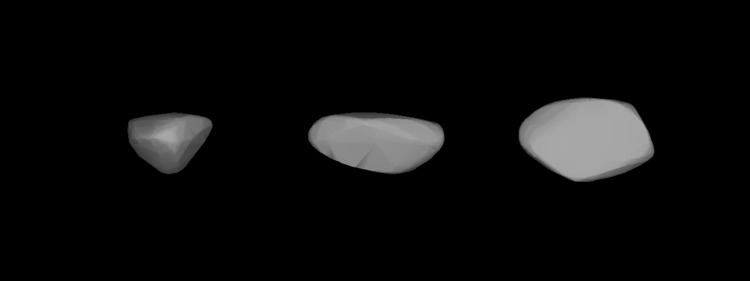Discovered by L. Chernykh MPC designation 1889 Pakhmutova Discovered 24 January 1968 Orbits Sun Asteroid group Asteroid belt | Discovery date 24 January 1968 Minor planet category main-belt · (outer) Absolute magnitude 10.8 | |
 | ||
Alternative names 1968 BE · 1942 JM1966 US · 1969 JM Discovery site | ||
1889 Pakhmutova, provisional designation 1968 BE, is a carbonaceous asteroid from the outer region of the asteroid belt, approximately 34 kilometers in diameter. It was discovered by Russian astronomer Lyudmila Chernykh at the Crimean Astrophysical Observatory in Nauchnyj on 24 January 1968.
Pakhmutova is a C-type asteroid. It orbits the Sun at a distance of 2.7–3.4 AU once every 5 years and 5 months (1,983 days). Its orbit has an eccentricity of 0.11 and an inclination of 13° with respect to the ecliptic. It was first identified as 1942 JM at Johannesburg Observatory in 1943, and its first used observation was made in 1968, when it was identified as 1966 US at the discovering observatory, extending the body's observation arc by 2 years prior to its official discovery.
It has a well-defined rotation period of 17.5 hours. Its albedo is in the range of 0.06–0.08, as measured by the Akari, IRAS and WISE/NEOWISE surveys.
The asteroid is named in honor of the Russian composer Aleksandra Pakhmutova, one of the best known figures in Soviet and later Russian popular music. Naming citation was published before November 1977 (M.P.C. 3936).
